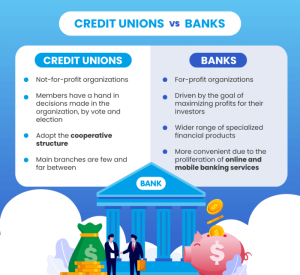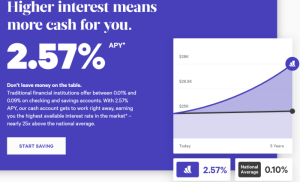Step into the future of payments with Contactless Payment Solutions, where convenience meets innovation in the world of transactions. From tap to pay, explore the seamless journey of contactless payments that is changing the way we exchange money.
Discover the advantages, technologies, and successful implementations that make contactless payments the new norm in the digital age.
Contactless Payment Solutions
Contactless payment solutions refer to a convenient method of making transactions using RFID (radio-frequency identification) or NFC (near field communication) technology. This allows customers to simply tap or wave their card, smartphone, or wearable device near a contactless-enabled terminal to complete a payment, without the need for physical contact or a swipe.
Benefits of Contactless Payments
- Speed: Contactless payments are much faster than traditional methods like swiping or inserting a card, making checkout processes more efficient.
- Convenience: Users can make payments quickly and easily, without the need to carry physical cash or cards.
- Security: Contactless payments use encryption and tokenization to protect sensitive payment information, reducing the risk of fraud.
- Hygiene: Especially in times of heightened awareness of cleanliness, contactless payments minimize physical contact, promoting a more hygienic transaction process.
Types of Contactless Payment Technologies
- NFC (Near Field Communication): Utilizes short-range wireless technology to enable communication between devices within close proximity, commonly used in smartphones and wearables.
- RFC (Radio-Frequency Identification): Uses radio waves to transmit payment information from a contactless card or device to a terminal, allowing for quick and secure transactions.
- QR Codes: Although not as common as NFC or RFID, QR codes can also facilitate contactless payments by scanning a code with a smartphone camera.
Businesses Embracing Contactless Payments
- Retailers: Many stores and shops have adopted contactless payment terminals to provide a seamless and efficient checkout experience for customers.
- Restaurants: Contactless payments have become increasingly popular in the food service industry, allowing diners to pay their bills quickly and securely.
- Transportation: Public transportation systems in various cities worldwide are implementing contactless payment options for commuters, making travel more convenient.
Implementation of Contactless Payment Solutions

Setting up contactless payment solutions for a business involves several steps to ensure a seamless integration and secure transactions.
Steps for Setting Up Contactless Payment Solutions:
- Choose a reliable payment processor that supports contactless payments.
- Obtain contactless payment-enabled hardware such as NFC-enabled terminals or mobile card readers.
- Install and configure the hardware to accept contactless payments securely.
- Train staff on how to process contactless payments and educate customers on the payment method.
Best Practices for Integrating Contactless Payment Solutions:
- Ensure seamless integration with existing POS systems for a smooth checkout experience.
- Offer multiple contactless payment options such as NFC cards, mobile wallets, and wearables.
- Regularly update software and firmware to protect against security vulnerabilities.
Security Measures for Safe Contactless Transactions:
- Implement tokenization to replace sensitive card details with unique tokens for each transaction.
- Enable end-to-end encryption to protect data transmitted during contactless payments.
- Monitor transactions for any suspicious activity and take immediate action if fraud is detected.
Streamlining the Checkout Process with Contactless Payment Solutions:
- Reduce wait times at the checkout counter by enabling faster transactions with contactless payments.
- Minimize errors associated with manual entry of payment information by tapping or waving the contactless device.
- Enhance customer experience by providing a convenient and secure payment option.
Consumer Adoption and Behavior
In recent years, the adoption of contactless payment solutions has seen a significant rise as consumers embrace the convenience and speed they offer. This shift in payment behavior has been influenced by various factors, including technological advancements and changing consumer preferences.
Trends in Consumer Adoption
- According to a study by Statista, the global number of contactless payment users is expected to reach 2.6 billion by 2022.
- Younger generations, such as Millennials and Gen Z, are leading the way in adopting contactless payments due to their comfort with technology and desire for seamless transactions.
- Retailers and businesses are increasingly implementing contactless payment options to cater to this growing demand and provide a frictionless payment experience.
Impact on Consumer Spending Behavior
- Contactless payments have been found to increase impulse purchases as the quick and easy nature of the transaction encourages consumers to spend more.
- Research by Mastercard shows that consumers tend to spend more when using contactless payments compared to traditional cash transactions.
- The convenience of contactless payments also leads to higher customer satisfaction, driving repeat business and loyalty.
Shift Towards Contactless Payments Post-Pandemic
- The COVID-19 pandemic has accelerated the adoption of contactless payments, with consumers prioritizing hygiene and safety in their payment choices.
- Merchants and businesses have adapted to this shift by implementing touchless payment options to minimize physical contact and reduce the spread of germs.
- Studies indicate that the pandemic has permanently changed consumer behavior, with many individuals now preferring contactless payments for their convenience and safety benefits.
Factors Influencing Consumer Trust
- Security and data protection are crucial factors influencing consumer trust in contactless payment technologies.
- Strong encryption methods, tokenization, and biometric authentication help reassure consumers about the safety of their financial information when using contactless payments.
- Regulatory compliance and transparency in how personal data is handled also play a significant role in building trust among consumers.
CREDIT AND COLLECTIONS BANKING SERVICES
Credit and collections banking services play a crucial role in the financial industry by providing individuals and businesses with access to credit facilities and ensuring the recovery of outstanding debts. These services help banks manage risk, generate revenue, and maintain financial stability.
Types of Credit Services Offered by Banks
- Personal Loans: Banks offer personal loans to individuals for various purposes such as education, home renovations, or emergencies.
- Credit Cards: Banks issue credit cards to customers allowing them to make purchases on credit and pay off the balance at a later date.
- Mortgages: Banks provide mortgage loans to help individuals purchase homes, with the property serving as collateral for the loan.
- Business Loans: Banks offer business loans to entrepreneurs and companies for expansion, working capital, or other business needs.
Strategies for Effective Debt Collection and Recovery
- Establish Clear Terms: Clearly communicate terms and conditions to borrowers to avoid confusion and disputes.
- Regular Follow-ups: Implement a systematic follow-up process to remind customers of their outstanding payments.
- Offer Repayment Plans: Provide flexible repayment options to borrowers facing financial difficulties to help them meet their obligations.
- Utilize Collection Agencies: Partner with collection agencies to assist in recovering overdue debts through professional means.
Impact of Credit and Collections Services on a Bank’s Financial Health
- Revenue Generation: Credit services contribute to a bank’s revenue through interest charges and fees associated with lending products.
- Risk Management: Effective collections services help mitigate credit risk and reduce the likelihood of loan defaults, safeguarding the bank’s financial health.
- Customer Relationships: Handling credit and collections professionally can enhance customer trust and loyalty, leading to long-term relationships and repeat business.
- Regulatory Compliance: Banks must adhere to regulatory requirements when offering credit and collections services to ensure compliance and avoid penalties.
Outcome Summary

In a world where speed and security are paramount, Contactless Payment Solutions emerge as the ultimate game-changer, simplifying transactions and enhancing user experience. Embrace the contactless revolution today for a smarter and more efficient way to pay.
Detailed FAQs
How secure are contactless payments?
Contactless payments use encryption and tokenization to secure transactions, making them as safe as traditional card payments.
Do all businesses accept contactless payments?
Most businesses are adapting to contactless payments, but it’s always good to check with the merchant before making a transaction.
Can contactless payments work without an internet connection?
Yes, contactless payments can work offline for small transactions, but for larger amounts, an internet connection might be necessary for verification.
Are contactless payments faster than traditional card payments?
Yes, contactless payments are quicker as they eliminate the need to insert or swipe cards, making the checkout process more efficient.
How do contactless payments affect consumer behavior?
Contactless payments encourage quicker transactions and impulse buying, leading to increased consumer spending in certain cases.




